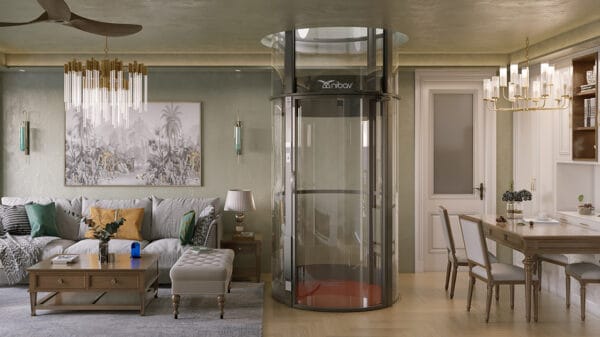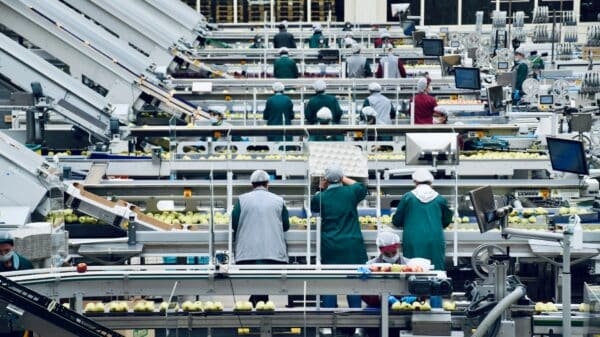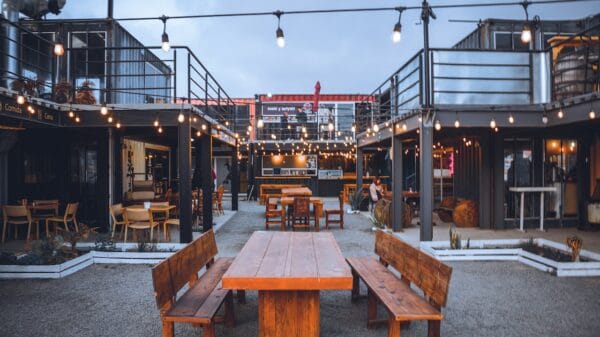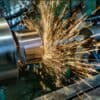The furniture manufacturing industry has the same goal as many other lucrative industries: produce items of the highest quality for the lowest cost. A company can gain a good reputation by selling valuable furniture at a rate that puts them ahead of the competition, and they can also turn a solid profit because of the low cost of materials and production. On paper, it sounds like the perfect setup for a healthy business, yet it’s not always that easy in the world of furniture. A dilemma arises when you try to produce a piece of furniture for a low cost; the problem is, you often get what you pay for. As furniture companies work to keep up with consumer demand, cutting corners on production can lead to defective items, not to mention the presence of a less-than-efficient manufacturing system.
If you’re one of the decision-makers who has a direct hand in furniture manufacturing, you know the changing market and consumer demands are causing ripples throughout the industry. Let’s examine how the cost has changed, as well as how you can adapt to a shift in the business model.
The High Cost of Low-Quality Furniture
It’s a timeless business quandary: How to produce high-quality items that will turn a profit without putting you in the red. You want to be able to spend as little as possible on the production and materials, but you want to end up with a product that will sell well, and preferably at a higher price margin. As a whitepaper from Virginia Tech explains, “Every manufacturing firm requires allocation of raw materials consumption, labor, and overhead expenses to processed goods in order to determine the final manufacturing costs. In most industries, manufacturing costs range from 60 to 70 percent of the final sale price. Therefore, the need for effective cost allocation systems is vital to control manufacturing costs.”
This can be even more difficult in the furniture world, given the fact that it can be hard to estimate fixed cost allocations to materials like paint and glue. Even if you manage to find the line between cheap production costs and profitable output, it’s hard to move out of the business model of providing basic furniture — furniture that’s lower in both price and quality.
A good real-world example of this is IKEA. An article at Retail Dive outlines the problem the company is looking to solve. In order to grow, the Swedish furniture and décor giant wants to go “upscale” by offering more high-end pieces. It already has two obstacles to overcome: the fact that it isn’t well-established as an online retailer just yet (a major drawback given how many consumers are moving towards e-commerce for fast and easy purchases), and that it’s built its reputation on being the cost-effective alternative to modern furniture retailers. IKEA is where you want to shop if you need basic, throwaway pieces that won’t last forever and ones that you won’t mind assembling yourself from a box of parts.
But now, IKEA wants to establish itself as a company that can provide long-lasting furniture pieces — items that will be considered an investment, which is what many homeowners are looking for. In this way, the furniture industry can be seen as analogous to the same shift that’s happening in fashion; namely, a move away from the so-called “fast fashion” and more towards high-quality pieces that will last. “Fast furniture” is no longer as appealing to a market share that doesn’t have the time to put together a bookshelf, or make the trip to a storefront location because the online store’s shipping is too costly.
The Retail Dive piece even quotes Philip Ryan, associate partner at consulting firm Vivaldi, as saying about IKEA: “I don’t think they can survive without increasing quality. We see quality being asked for more and more, [with] fewer throw-away products and more ‘considered consumption.’ You need products that you know are going to last.” Completely changing their production model to use higher-quality materials is going to be a monumental task for IKEA — and a learning experience for other furniture manufacturers.
Fixing the Process
There are a number of persistent flaws in the furniture manufacturing design business. If you cut costs by purchasing low-quality wood or substandard glue, you may end up with shoddy construction — and frustrated customers. Although some clientele, such as IKEA’s, may come to expect some issues for the lower price, it’s not a business model that will help your reputation or grow your company.
You can start at the source by employing a more efficient manufacturing process. The Virginia Tech whitepaper touts the ABC (Activity-Based Cost) method as the most efficient way to produce furniture, as it has “a goal of identifying cause and effect relationships to objectively assign costs.” However, as the paper notes, “Gathering and maintaining accurate activity information has always been the Achilles heel of the ABC method.” Enterprise resource planning (ERP) software makes gathering and maintaining accurate data simple.
ERP allows you to control different aspects of the manufacturing workflow and monitor quality to determine appropriate cost allocation. ERP also makes it easy to track and audit suppliers, which is particularly useful in the event of defective items.
ERP for Efficiency
As the decision-maker in furniture manufacturing, it’s up to you to seek out the best solutions to create high-quality furniture at a low cost to your business. It may seem like an impossible task, but if you invest in ERP, you’ll be able to better control the production accuracy and cost allocation in order to maximize your product quality. With additional modules for supplier tracking and ordering, you’ll be in a good position to save time and money — and hopefully, avoid the IKEA fate of being known for fast furniture.
Would you pay more for furniture if it meant receiving a higher quality product, or are you satisfied with something more basic? Tell us why in the comments.
Aaron Continelli, president of Cre8tive Technology and Design, started things small in 2005. What began as a one person consulting firm has now become a staff of 58 with three office locations. Specializing in ERP system sales and services, Cre8tive Technology and Design became an EPICOR Partner (Value Added Reseller) in 2007. Since then, Cre8tive Technology and Design has emerged as one of EPICOR’s ELITE and won the 2013 Americas Partner of the Year as the Top Revenue Producer.
























































































































































































